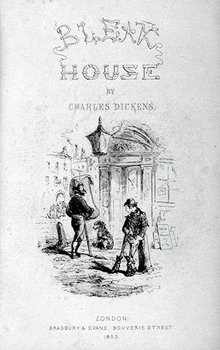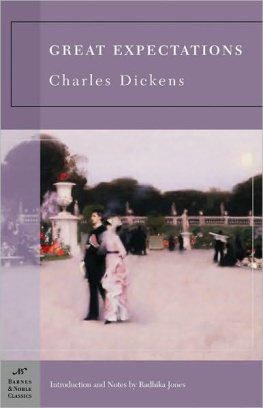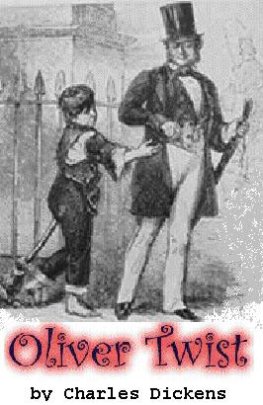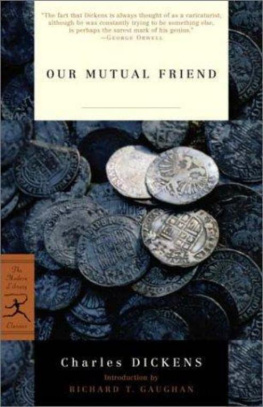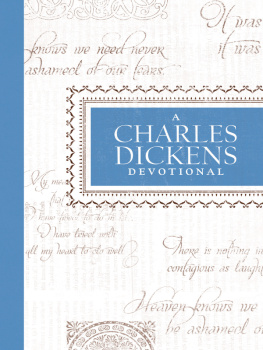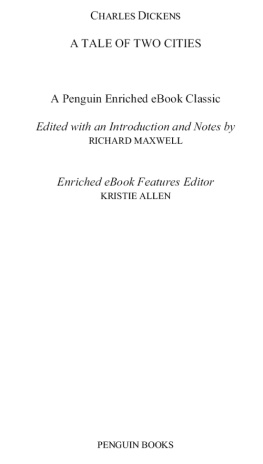Charles Dickens - A Tale of Two Cities and Great Expectations
Here you can read online Charles Dickens - A Tale of Two Cities and Great Expectations full text of the book (entire story) in english for free. Download pdf and epub, get meaning, cover and reviews about this ebook. year: 2010, publisher: Penguin, genre: Detective and thriller. Description of the work, (preface) as well as reviews are available. Best literature library LitArk.com created for fans of good reading and offers a wide selection of genres:
Romance novel
Science fiction
Adventure
Detective
Science
History
Home and family
Prose
Art
Politics
Computer
Non-fiction
Religion
Business
Children
Humor
Choose a favorite category and find really read worthwhile books. Enjoy immersion in the world of imagination, feel the emotions of the characters or learn something new for yourself, make an fascinating discovery.

- Book:A Tale of Two Cities and Great Expectations
- Author:
- Publisher:Penguin
- Genre:
- Year:2010
- Rating:3 / 5
- Favourites:Add to favourites
- Your mark:
- 60
- 1
- 2
- 3
- 4
- 5
A Tale of Two Cities and Great Expectations: summary, description and annotation
We offer to read an annotation, description, summary or preface (depends on what the author of the book "A Tale of Two Cities and Great Expectations" wrote himself). If you haven't found the necessary information about the book — write in the comments, we will try to find it.
A Tale of Two Cities and Great Expectations — read online for free the complete book (whole text) full work
Below is the text of the book, divided by pages. System saving the place of the last page read, allows you to conveniently read the book "A Tale of Two Cities and Great Expectations" online for free, without having to search again every time where you left off. Put a bookmark, and you can go to the page where you finished reading at any time.
Font size:
Interval:
Bookmark:
The first reviews of A Tale of Two Cities began before the novel was finished with its serial run, as often occurred with Dickenss fiction. Not only literary reviews, such as the Saturday Review , but also newspapersthe Sun , Examiner , Morning Chronicle , and Observer all weighed in on the achievements and failures of the novel. These reviews, as well as letters to Dickens from individual readers, influenced the novelist as he wrote the later numbers.
Dickenss penchant for dramatic incident was universally recognized if not unanimously applauded. Critics disagreed about the aesthetic value of his use of pathos. Highbrow critics derided its popular appeal and disparaged Dickens for working upon the feelings by the coarsest stimulants, as Sir James Fitzjames Stephen put it in his essay review of the novel. But other more middlebrow critics, such as the anonymous reviewer in the Sun , admired Dickenss extraordinary command over our emotions as a pathetic narratorpathetic in this instance being complimentary.
The novels treatment of the history of the Revolution was another disagreed upon point. Not surprisingly, the Saturday Review essay by Stephen found Dickenss knowledge of the momentous events to be scanty, apparently, the critic sneered, based upon a single reading of Carlyles History of the French Revolution . Though not disputing that the French noblesse had much to answer for, Stephen was most critical of A Tale for exaggerat[ing] the faults of the French aristocracy in a book which will naturally find its way to readers who know very little of the subject except what he [Dickens] chooses to tell them. The class bias here is clearly marked. (Stephen also poked fun at Dickenss translations from French, which he deemed awkwardly literal; this, too, was a mark of class prejudice.) On the other hand, the review in the Observer found Dickenss presentation of the Revolution not radical enough: he has written of it as though he were imbued with all the prejudices of the days of Pitt, against the actors and the drama, that is, exhibiting the fear of Republicanism common during Prime Minister Pitts government (17831801).
Other critics, such as the anonymous Morning Chronicle reviewer, were less concerned about the novel misleading the uneducated British populace, and instead acknowledged the great attraction [...] found in the isolated pictures of life which abound in its pages. The Sun s review of the work in progress declared Dickens had recently developed genius as a master of Terror. (One might dispute the recent development of this talent; Dickenss skill at depicting terrifying incidents was evident from earlier novels, such as the murder of Nancy in Oliver Twist , the crowd riot in Barnaby Rudge , and the haunted guilty conscience of Jonas Chuzzlewit in Martin Chuzzlewit .) A longtime friend and admirer of Dickens, John Forster, who reviewed the novel for the Examiner , emphasized the relationship the novel explores between nation and family. Part of the strength of the story, according to Forster, is [t]he subtlety with which a private history is associated with a most vivid expression of the spirit of the days of the great French Revolution. He claimed that in Dickenss broadest colouring of Revolutionary scenes, [...] he is working out closely and thoroughly the skilfully designed tale of a household. Like other Victorian novels, such as Thackerays Vanity Fair (1848), A Tale of Two Cities aggrandizes the private history and minimizes the national story by comparison.
Forster was not the only critic to praise the novel for its sympathy with the sufferingthe suffering that caused the Revolution as well as that which was inflicted by the Revolution. The Sun review called the scene in which Dr. Manette is restored to the world and to his daughter among the most exquisite things Charles Dickens has ever written. Regarding the dnouement, the reviewer for the Morning Chronicle was perfectly amazed at a solution so unexpected, and withal so natural. Forster, in The Life of Charles Dickens (187274), reflected on the effect of A Tale of Two Cities . He suggested that the death of Sydney Carton merited the most acclaim: Though there are excellent traits and touches all through the revolutionary scenes, the only full-length that stands out prominently is the picture of the wasted life saved at last by heroic sacrifice. Dickens speaks of his design to make impressive the dignity of Cartons death, and in this he succeeded perhaps even beyond his expectation [...].
Widely regarded as a subfield of philosophy until the mid-nineteenth century, psychology was first developed into an independent scientific discipline in Germany. The British psychologists (to employ a slight anachronism) of Dickenss period were influenced by the ideas of John Locke about the self as a composite of experience, and particularly by his theory of association. Throughout the nineteenth century scientists attempted to discover a biological mechanism for the association of ideas. One early hypothesis, the pseudoscience of phrenology, first developed by Franz Gall and then popularized in Britain by George Combe, had widespread impact. Phrenology claimed that different areas, or organs, of the brain (which manifested in the shape of the skull and its varying protrusions) corresponded to character traitsspirituality, love, greed, language. The larger its organ in the brain, the more developed the trait in the person. Combes hypothesis was popular because it offered a simple, physical explanation for personality. Counterintuitively, however, another reason for the popularity of phrenology was its emphasis on self-formation. Mapping ones head, and thereby identifying weak and strong faculties, it was believed, enabled one to exercise and further develop ones deficient capacities, thus overcoming the limitations endowed by nature at birth.
Phrenology eventually was disputed by scientists, but both psycho-physiologists (as those who studied mind-brain phenomenon were known at the time) and popular writers of self-help manuals agreed about the power of beliefs, mental associations, and habits to shape a persons character. In A Tale of Two Cities , Sydney Carton is a cynic about human nature and, though brilliant, dissolute and self-destructive. His last, heroic (yet utterly self-destructive) act is associated with his romantic feelings for Lucie Manette, which bring out his ideal nature. Dickens also creates a fascinating representation of psychology in Dr. Manettes reaction to his long and solitary imprisonment, that is, the physical activity of shoe making, which is a solace to his fears of solitary confinement and also how he safely channels his anger. Alone after his daughter weds the nephew of the man who had Manette imprisoned, the doctor loses his ability to repress his associations between his new son-in-law and his former prison cell, and he slips into an almost catatonic state, just like the one in which Mr. Lorie finds him after his release from the Bastille. In this state of mind, Manette reverts to the activity that provided an outlet to him while in prison: he begins making shoes. In chapter 19, when Mr. Lorry questions his friend about the causes of the relapse, Dr. Manette suggests that it was sparked by a strong and extraordinary revival of the train of thought and remembrance that was the first cause of the malady. Some intense associations of a most distressing nature were vividly recalled, I think. The idea of destroying the bench and the tools causes Manette to feel a sudden sense of terror, like that which one may fancy strikes to the heart of a lost child. His poignant description highlights the feelings of vulnerability, as well, perhaps, as a repressed desire for revenge, that remains deeply embedded in his mind, even after his recovery.
Font size:
Interval:
Bookmark:
Similar books «A Tale of Two Cities and Great Expectations»
Look at similar books to A Tale of Two Cities and Great Expectations. We have selected literature similar in name and meaning in the hope of providing readers with more options to find new, interesting, not yet read works.
Discussion, reviews of the book A Tale of Two Cities and Great Expectations and just readers' own opinions. Leave your comments, write what you think about the work, its meaning or the main characters. Specify what exactly you liked and what you didn't like, and why you think so.


